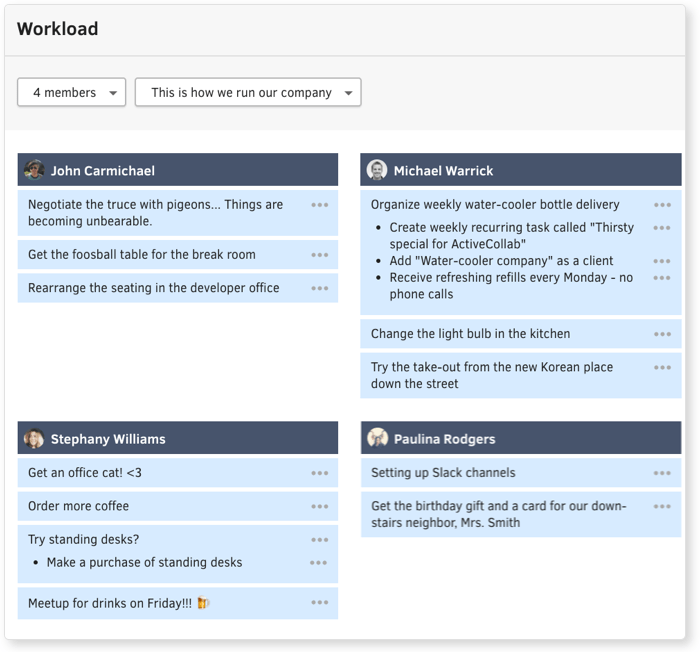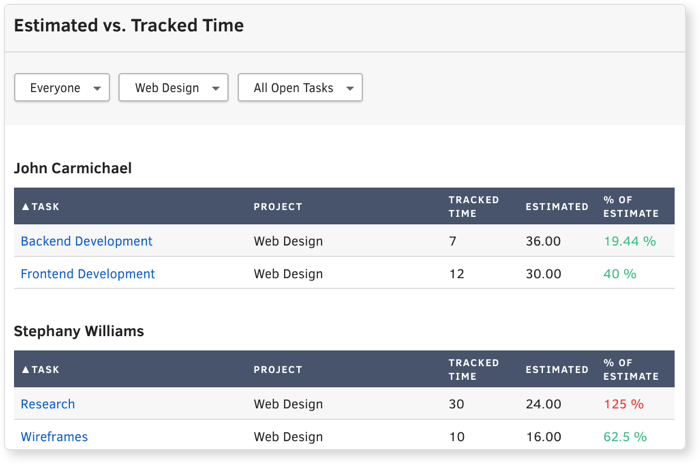If a team member is complaining about working too much, there might be an issue with workload allocation. As a manager, your goal is to get to the root of the problem, understand your team members and work together on increasing productivity.
Meet Stephany. She is a UX designer working in a SaaS company, in charge of overseeing customer accounts and developing strategic alliances with local companies. Although Stephany is relatively new to the company, she seems to have adapted perfectly to the working atmosphere.
However, as the time goes by, job demands become higher and the workload gets bigger. Stephany’s enthusiasm and diligence are suddenly overshadowed by the heavy workload that she is unable to cope with. Her productivity drops, there is no sense of achievement, and she ends up overwhelmed and stressed-out.
Sounds familiar?
I’m sure most of you have been in a similar situation at least once in your career. But, what happens if your company is losing a lot of time, energy and productivity while Stephany is on the team? Are you aware that by accepting her marginal performance, you may endanger the team’s morale and risk immeasurable consequences?
On the other hand, if you decide to coach the person out of the group, it would mean that you failed to bring your employee’s performance to the suitable level. At the end of the day, there may be many reasons behind such a behavior that you’re not even aware of.
So how do you get people to follow your lead and channel their energy towards achievable goals?
Have a friendly conversation
Before making any bold decisions, you need to have a frank conversation with the employee in question. Talk to Stephany and discuss the gaps that led them to underperform. You need to approach the problem with a managerial mindset, remove any barriers, and get the most out of your overworked employees.
Encourage them to come clean: They may be unsatisfied by the company’s process, or have a personal grudge against you as a manager - whatever the case may be your employee has to know that there will be no repercussions for their feedback.
You need to make sure whether the inefficiency at work is caused by stresses at home or broken promises at work. If the employee claims that the heavy workload is keeping them from performing at peak levels, then you should do an in-depth analysis in order to get some of these conclusions:
Possible problem #1: Stephany is overworked when compared to other team members
In that case, the management is to blame. The most common cause of such situation can be:
- bad managerial skills
- inappropriate task assignment
- wrong and overly ambitious (pretentious) estimate made by a project manager
- overestimation of employee’s working skills
Once the employee notices that they have heavier workloads than their teammates, they become frustrated and dissatisfied. This is a common side effect of project manager’s bad time management.
Possible problem #2: Stephany needs more time than the others to complete similar tasks
Here, the problem lies in their working performance. Either they aren’t adequately equipped or they are not competent enough to do their job.
Possible problem #3: Stephany is not responsible and dedicated enough to her job
if your employee is constantly taking breaks, chit-chatting and gossiping around the office, they are obviously not focused enough. In most cases, this usually slips unnoticed in the early stages of a hiring process.
However, dealing with employees doesn’t have to be a painful process.
How to track and balance workload using ActiveCollab
If you manage to delegate the workload equally across the team, you will prevent frustration and help your employees stay within timelines.
Luckily, ActiveCollab has helped Stephany’s company master the art of workload management.
If you want to gain an accurate insight into how many tasks are assigned to each team member, go to the ActiveCollab’s Report section.

The Workload report should help you have a clear overview of the workload your team members have to manage within a specific timeframe.
Consider the Workload report as a tool to balance out the workload equally among the team. Even though this example shows a lighter side of day-to-day company life, Joshua (who is a project manager) should reassign “Order more coffee task” to Paulina or himself, thus unburdening Stephany of more duties than she can handle. She is an UX designer, after all, and ordering more coffee is a burden that she has no obligation to bear.
Another way to keep track of your team duties and workload is by using a Team Timeline. You can see how your workload is distributed across the team and compare the amount of work assigned to each team member

This report allows you to plan workload redistribution and make sure everyone on the team is equally involved in the project development.
By using the Estimated vs. Tracked Time report (example below), you can determine if a certain employee takes more time than anticipated to perform a certain task. Also, this is a great tool to keep track of work performance trends.
For instance: in the past, Stephany needed an hour to perform a certain task. Nowadays, however, ActiveCollab’s Estimated vs. Tracked Time report states it takes her two hours for the exact same work.
This is the red flag you should look out for - something has changed, and you need to handle the problem before snowball effect kicks in. Afterward, handle it as a proper leader would: by sitting Stephany down and spend 20% time talking and 80% of the time listening.

Keep in mind that ActiveCollab cannot help you identify the level of your employee’s motivation and whether it is caused by private issues or job dissatisfaction. But, it can help you see when was the first time when they were heavily overdue with the task and determine when they started getting behind the schedule.
Don’t let your workflow and team culture suffer because of poor time allocation. By using ActiveCollab, you will be able to keep track of your team’s responsibilities and create the groundwork for developing a thriving team culture.


